More than 3 million years ago in the Paleolithic age a group of people settled in this area building a temporary site and exploiting the resources that "Cascais" offered, in the Stone Age the human being depended on hunting as the main means of food, later thanks to the river other civilizations occupied the parish: "São Domingos de Rana" until reaching the advanced Roman civilization that took advantage of the area and built a village that we know today as "Freiria", I brought my drone to observe this archaeological site from another perspective, enjoy my experience.🏛️🌳⛰️
Hace mas de 3 millones de anos en la edad paleolitica un grupo de personas se establecieron en esta zona construyendo un yacimiento temporal y explotando los recursos que "Cascais" ofrecia, en la edad de Piedra el ser humano dependia de la Caza como principal medio de alimentacion, posteriormente gracias al rio otras civilizaciones ocuparon la parroquia: "São Domingos de Rana" hasta llegar a la avanzada civilizacion Romana que si aprovecharon la zona y construyeron una aldea a la que hoy en dia conocemos como "Freiria", yo traje mi drone para observar este yacimiento arqueologico con otra perspectiva, disfruta de mi experiencia.⛲🧭📸
A little less than three hundred meters away was located the small villa occupied in the Paleolithic, however some carbon fourteen tests revealed an interesting fact about the Roman villa of "Freiria" and that is that it was also occupied in the Chalcolithic in the era of working with bronze, there are also objects that were found 400 meters to the west where there was a human occupation of the late Bronze Age that is understood between 3300 and 1200 BC. Already in this period man was able to carry out other tasks besides hunting, for example farming was essential here. When the Romans occupied the lands there were already some objects from the Iron Age which are believed to have been brought here.🧭⛲⛰️
A poco menos de trescientos metros se ubico la pequena villa ocupada en el Paleolitico sin embargo algunas pruebas de carbono catorce revelaron un dato interesante en la villa romana de "Freiria" y es que tambien fue ocupada en el Calcolitico en la era de trabajo con bronce, tambien hay objetos que se encontraron a 400 metros hacia el oeste donde existio una ocupacion humana de la edad de bronce tardia que se comprende entre el 3300 al 1200 antes de Cristo ya en esta epoca el hombre conseguia realizar otras tareas ademas de la caza, por ejemplo el cultivo fue indispensable aqui. Cuando los Romanos ocuparon las tierras ya existian algunos objetos de la era de Hierro la cual se cree fueron traidos aqui.👨🏻🏫🌎🏺🏺
To get to the Roman villa of "Freiria" we must go to Cascais which is literally in the center of Lisbon, here are the coordinates: (38 ° 43′15.8 "N 9 ° 19′23.6" O), access is quite easy and we can do it by vehicle or on foot, it has hours so if you visit it I recommend checking the opening and closing times, it's free and you don't need a guide! Be careful it is guarded by cameras. Come with comfortable and cool clothing because summer is hot in these lands, which are known for agriculture.⛰️🚩
Para llegar a la villa romana de "Freiria" debemos desplazarnos a Cascais que literalmente esta en el centro de Lisboa, te dejo aqui las coordenadas: (38°43′15.8″N 9°19′23.6″O), el acceso es bastante facil y lo podemos hacer con vehiculo o caminando, tiene horario por eso si lo visitas te recomiendo ver el horario de abertura y cierre, es gratis y no necesitas un guia! ten cuidado esta vigilado por camaras. Ven con ropa comoda y fresca porque el verano es caliente en estas tierras, las cuales se destacan por la agricultura.📸👨🏻🏫
It is clear that Cascais was a strategic and interesting place for the Romans and it is enough to look at the map of how the village looked at that time, if you look closely we have a river next to it that currently corresponds to the "tejo" river. It was important for the economy of the civilization because it was a fast means of transport and allowed them to carry large quantities of supplies or material for export. The Romans used agriculture and fishing a lot, both practices are still used today.🧭📸
Es evidente que Cascais era un lugar estrategico e interesante para los Romanos y basta con ver el mapa de como lucia la aldea en esa epoca, si observas con atencion tenemos un rio al lado que corresponde actualmente al rio "tejo" fue importante para la economia de la civilizacion debido que era un medio de transporte rapido y permitia llevar grandes cantidades de insumos o material para exportar. Los Romanos usaban mucho la agricultura y la pesca ambas practicas se usan hasta nuestros dias.🚩⛲
https://cascais7faces.wordpress.com/2018/04/13/villa-romana-de-freiria/


There are a few terms that differentiated the different parts of the thermal water complex, we start with: (apodyterium) which was a bath or changing area, (tepydarium) which was used for warm baths, (caldaryum) were used for hot water baths, the Romans also had a (frigidaryum) where they showered with cold water, (sudatorium) was a sauna area, (fornax) an area where water was heated from the air. This was a very advanced and unusual design as it had two floors and the walls had a hot water circulation. It is believed that it was never completely finished.🚩📸
Existen algunos terminos que diferenciaban las diferentes partes del complejo de aguas termales comenzamos por: (apodyterium) que era en bano o zona de cambio de ropa, (tepydarium) que era usado para los banos tibios, (caldaryum) eran usado para nos banos con agua caliente, tambien tenian a disposicion los Romanos de un (frigidaryum) donde se duchaban con agua fria, (sudatorium) era un area de sauna, (fornax) zona donde se calentaba el agua del aire. Este era un diseno muy avanzado y poco comun ya que contaba con dos pisos y las paredes tenian una circulacion de agua caliente. Se cree que no logro ser terminado completamente.🌎🏺
Source: Information local

Public asylums📸🏺 /Los asilos publicos🌎🚩
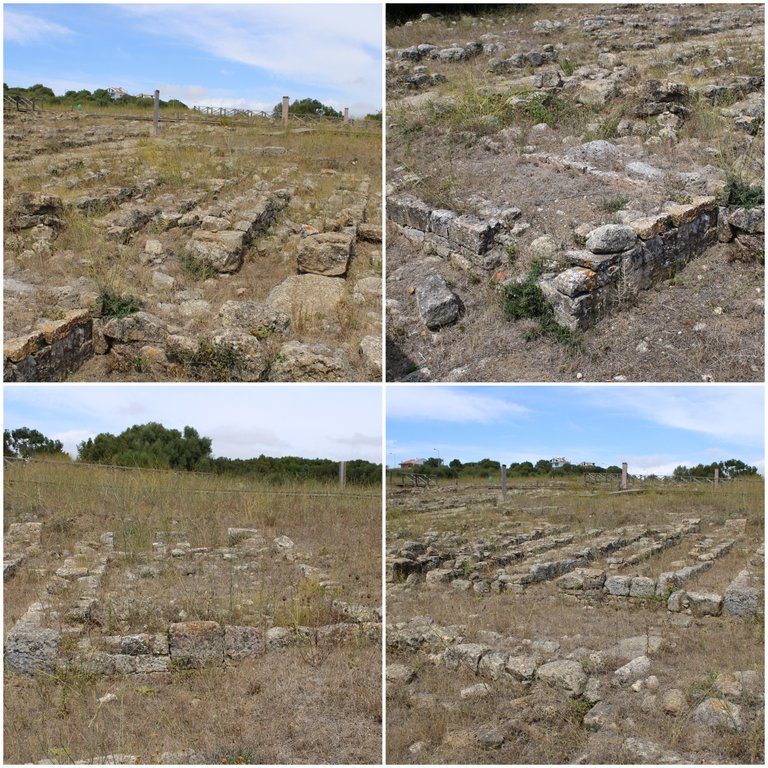
This is the most important and interesting structure of the villa of "Freiria" due to its great state of preservation and its enormous size, it was composed of a first stone structure that would later be covered with wood forming a second structure, these structures allowed the cereals to dry more efficiently and quickly, why? thanks to the channels that were formed between the separation of both structures, it was through there that the air circulated inside, this form of architecture also allowed to keep away pests such as rats, it is believed that the seed asylum not only served to store the grains grown locally but also those of other neighboring villas.🚩🧭
Esta es la estructura mas importante e interesante de la villa de "Freiria" se debe a su gran estado de preservacion y su enorme tamano, se compuso por una primera estructura de piedra que luego seria revestida con madera formando una segunda estructura, estas estructuras permitian que los cereales se secaban de forma mas eficiente y rapida, por que? gracias a los canales de que formaban entre la separacion de ambas estructuras, era por alli que circulaba el aire dentro, esta forma de arquitectura tambien permitia alejar las plagas como ratas, se cree que el asilo de semillas no solo sirvio para guardar los granos cultivados localemente si no tambien lo de otras villas vecinas.👨🏻🏫📸🌳
Source: Information local

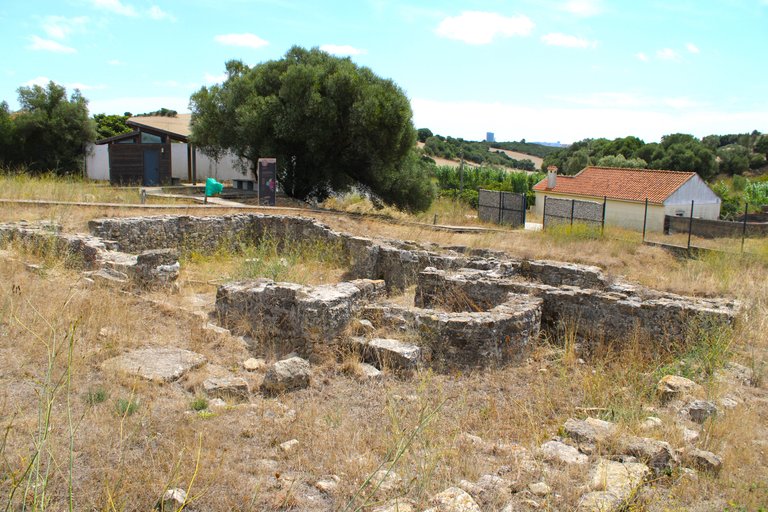
South Gate📸🏺 /Puerta sur🌎🚩
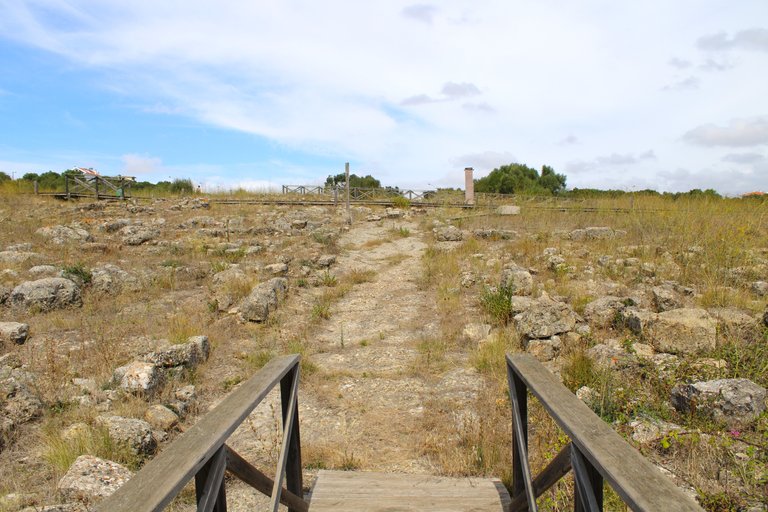
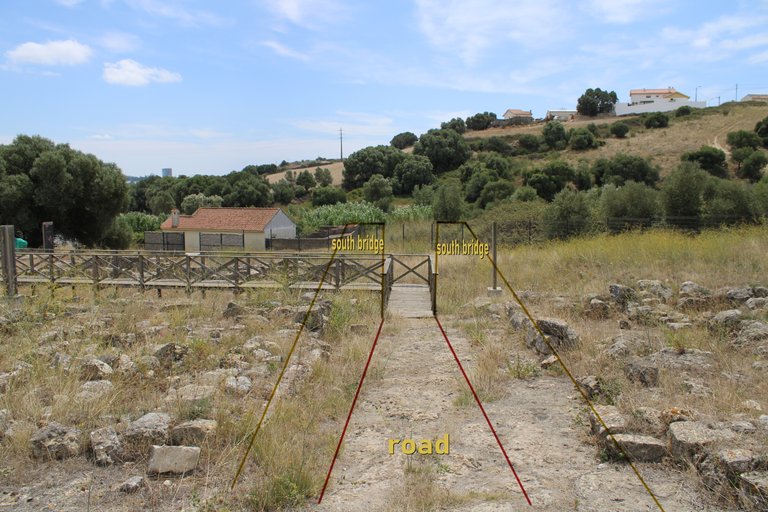
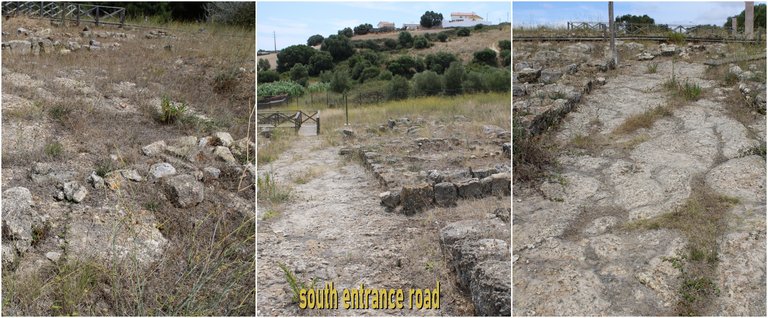
Clearly the villa was surrounded by a large wall that protected the Romans, this is the southern entrance and as you can see a road passed through it that was normally built with local materials such as granite rocks. If we go north-south on the right side (pars urbana) where the manor was inhabited, we have on the left side (pars fructuaria) which is the production complex and which in turn shares an annex with the thermal complex.📸🧭
Claramente la villa estaba cercada de una gran muralla que protegia los romanos, esta es la entrada sur y como puedes ver pasaba una calzada que normalmente se construia con materiales de la zona como rocas de granito. Si vamos sentido norte-sur de lado derecho (pars urbana) donde habitada el senorio, tenemos de lado izquierdo (pars fructuaria) que es el complejo de produccion y que a su vez comparte un anexo con el complejo de las termas.🏛️⛲
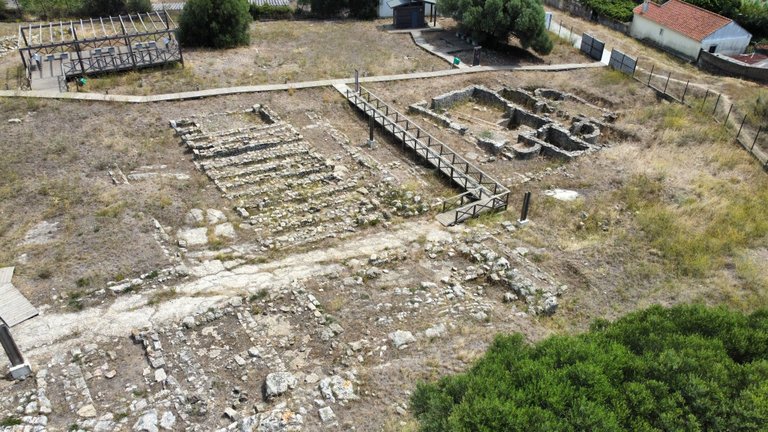

photos of my property (Source:Information local)


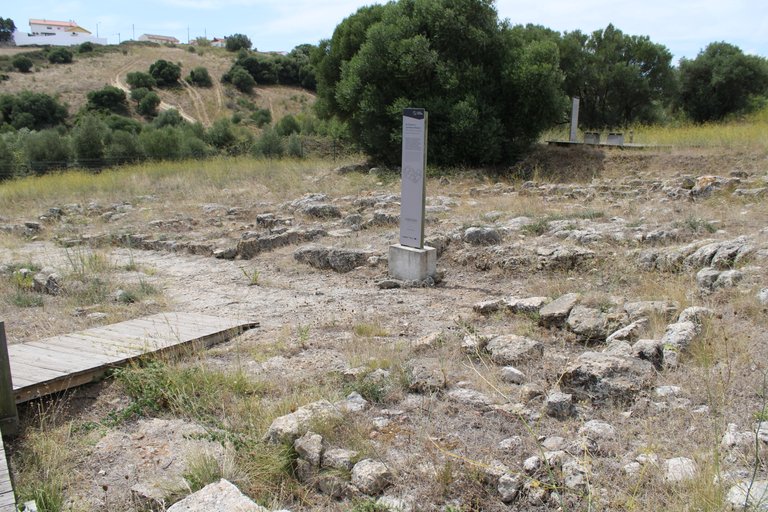
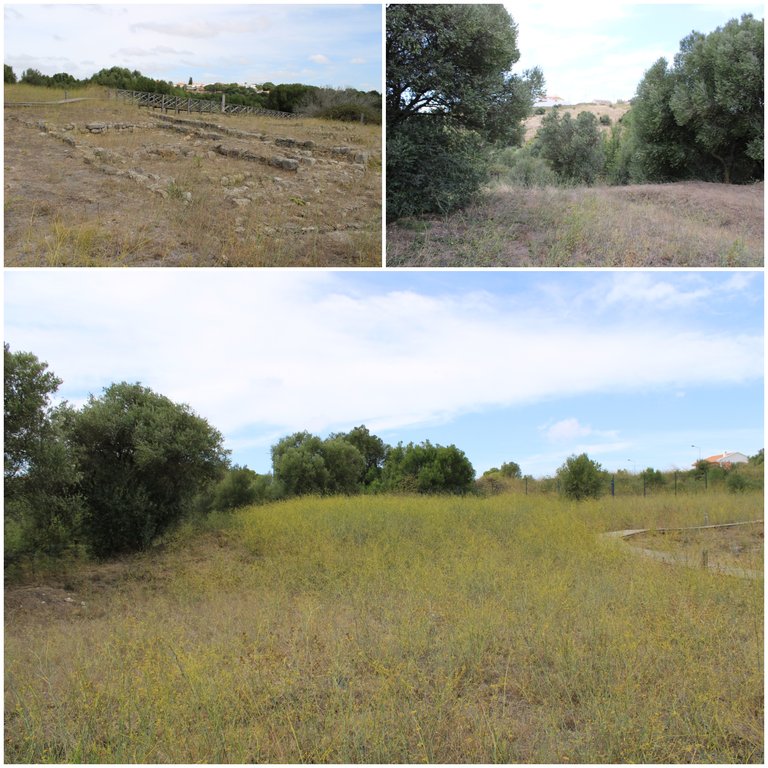
Due to the different characteristics of the terrain, the villa's main source of income was agriculture, which could be divided into: (or hortus) which would be the orchard, the orchard area, the (ager) which is the agricultural area and always systematic and more complex, (or saltus) area with vast areas of pasture for livestock purposes, (silva) area that was comprised of the surrounding wooded vegetation, normally not used. On the outskirts there was a water line that was usually carried to the villa by aqueducts and that could be shared with other neighbouring villas, in the distance you can see the necropolis where Roman customs allowed loved ones to rest in this area for eternity and being protected by the god (dis manibus).🧭📸
debido a las diferentes caracteristicas del terreno la villa tenia como fuente principal la agricultura, la cual podia dividirse en: (o hortus) que seria la huerta, la zona de pomar, el (ager) que es la zona de agricultura y siempre sistematica y mas compleja, (o saltus) zona comprendida con bastas areas de pasto para fines pecuarios, (silva) area que era comprendida por la vegetacion boscosa de los alrededores, normalmente no utilizada. A las afueras circulaba la linea de agua que habitualmente era conducida a la villa por acuaductos y que podian compartirse con otras villas vecinas, a lo lejos se puede ver la necropolis donde las costumbres romanas permitian a los seres queridos reposar en esta zona para la eternidad y siendo protegidas por el dios (dis manibus).👨🏻🏫🏺
Source: Information local

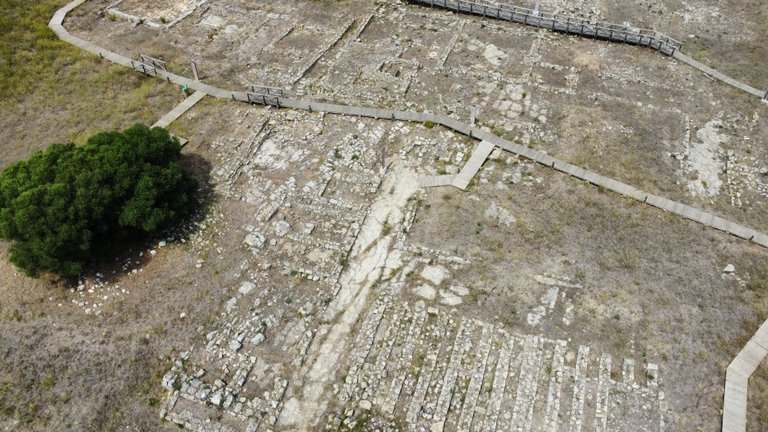

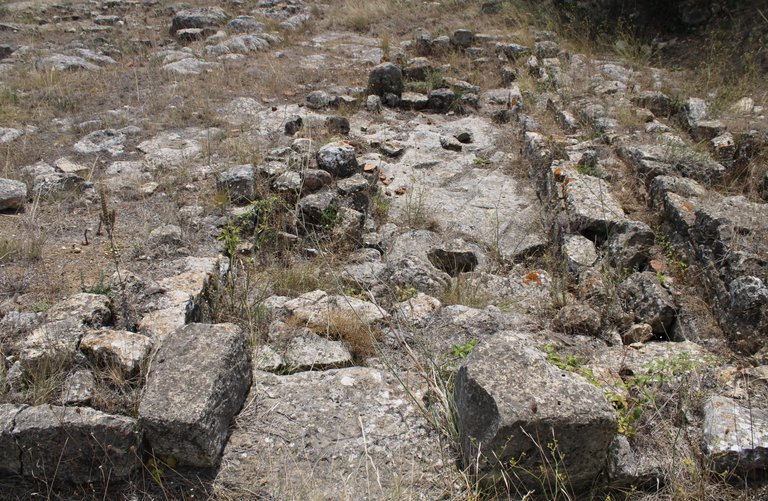

Architecture of the villa📸🏺 /Arquitectura de la villa🌎🚩
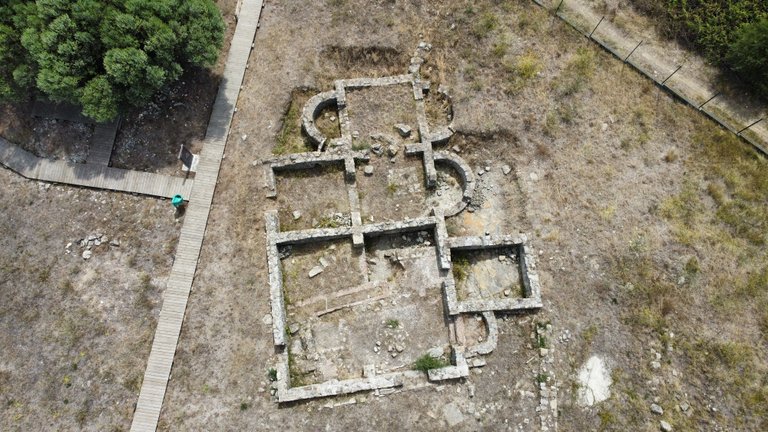
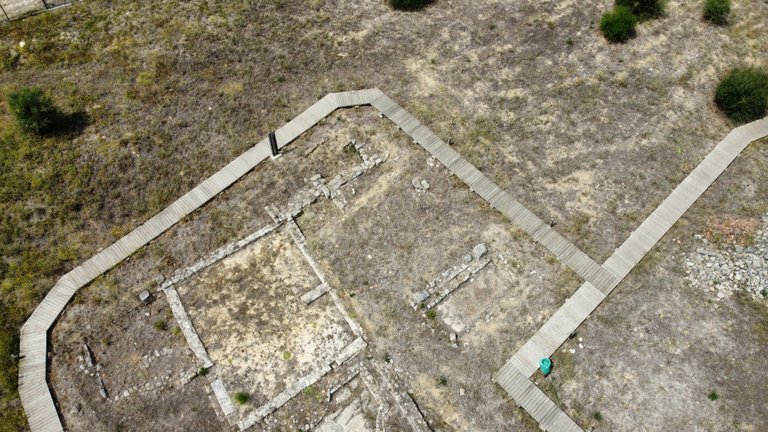
The villa house, which was not the same (pars domus) as the richest families, shared very similar architectural features, with an open central courtyard, an interesting way to take advantage of the rain, then the (peryslitum) which was a corridor that allowed to circulate around the outside of the house, some houses could include a (desk) or business office area. Altars could not be missing because the Romans were very devout and religious believers. Some rooms cannot be missing and of course the kitchen, then we have the (triclynum) which is the "dining room". Many houses were decorated with paintings, mosaics, had running water thanks to the advanced Roman canal system.📸🌎🧭
La casa de la villa la cual no era la misma (pars domus) que eran las familias mas ricas, compartian caracteristicas arquitectonicas muy similares, con un patio abierto central, forma interesante de aprovechar la lluvia, luego el (peryslitum) el cual era un corredor que permitia circular por las afuera de la casa, algunas casas podian incluir una zona de (escritorio) o oficina de negocio. No podian faltar los altares pues los romanos eran muy debotos y creyentes religiosos. No puede faltar algunos cuartos y claro la cozina, tenemos luego el (triclynum) que es el "comedor". Muchas casas estaban decoradas con pinturas, mosaicos, disponian de agua corriente gracias al sistema de canales avanzado de los Romanos.👨🏻🏫🏺📸
Source: Information local

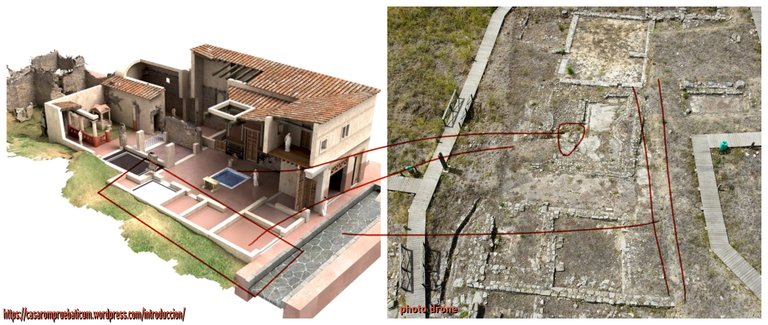

Titus's House📸🏺 /La casa de Titus🌎🚩
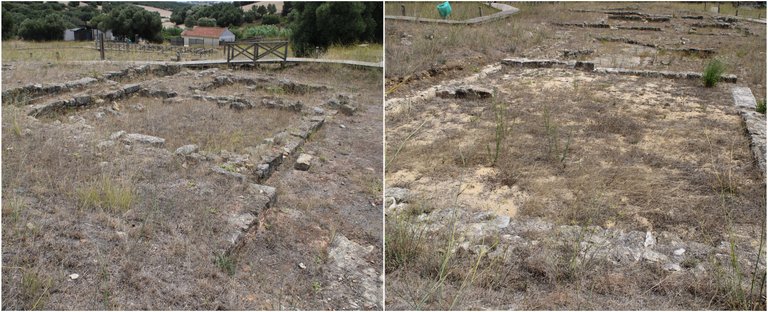
This is the most important house in the village and reserved for the family of the lord of the village! It was a special house with rooms for leisure or free time, normally the lord did not live there permanently as he was always on business or travelling. Special for inviting friends or closing some business with colleagues. Who lived here? None other than Titus Curiatus Rufinus, this Roman character was a Roman centurion of several legions who died at the age of sixty in the area of Dacia.👨🏻🏫🧔🏻♂️
Esta es la casa mas importante de la villa y reservada a la familia del senorio de la villa! era una casa especial con cuartos destinados al lazer o tiempo libre, normalmente el senorio no vivia de forma permanente ya que siempre se encontraba en negocios viajando. Especial para convidar amigos o cerrar algunos negocios con colegas. Quien vivio aqui? nada mas y nada menos que Titus Curiatus Rufinus, este personaje romano fue un centurion romano de varias legiones murio a los sesenta anos en la zona de Dacia.🤴🏻
https://en.wikipedia.org/wiki/Titus_Flavius_Rufus

North gate entrance📸🏺 /Entrada puerta norte🌎🚩
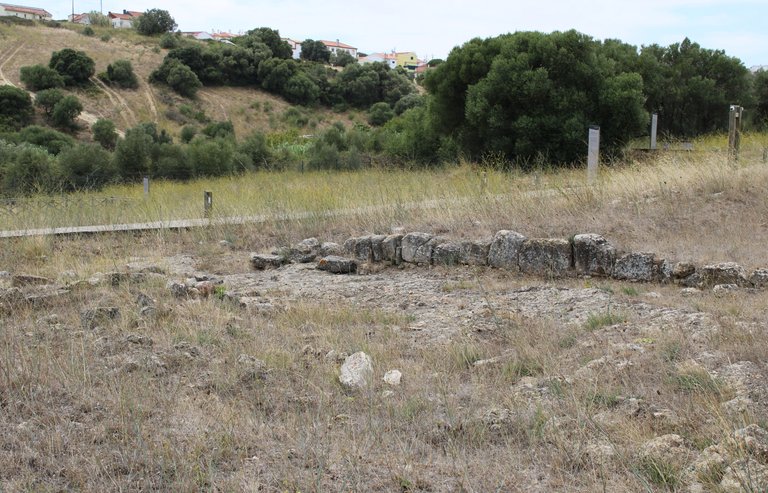
To make the villagers who worked in agriculture feel safe, the city had only two entrances, one to the north and one to the south. Here we have the road that the Romans had to pass through to enter the village on the north side. It had to be quite wide because it was used for carriages and animals.🏺🧭
para hacer sentir seguros a los moradores de la villa que se dedicaban a la agricultura la ciudad contaba solo con dos entradas una norte y sur, aqui tenemos la calzada por donde deberian pasar los romanos para entrar a la villa en el lado norte, tenia que ser algo ancho porque se circulaba con carros y con animales.🏛️⛲


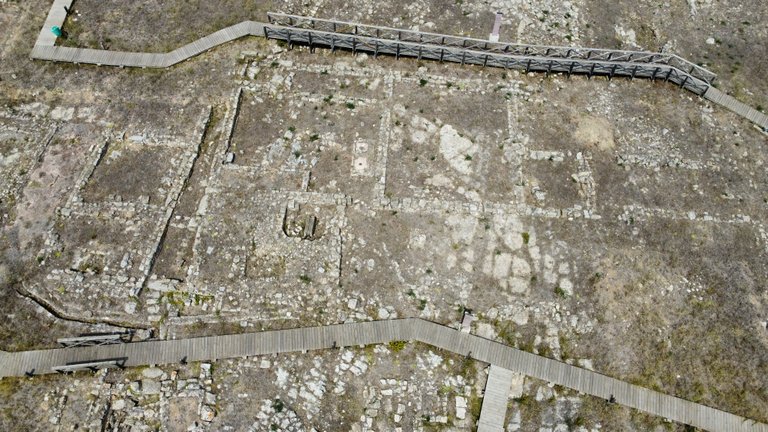
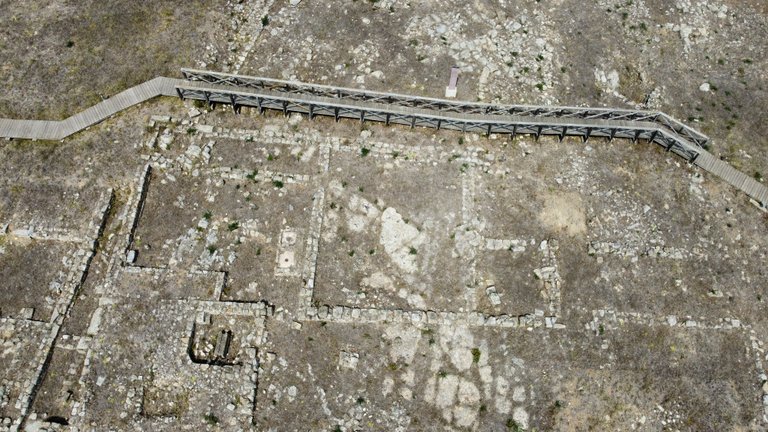
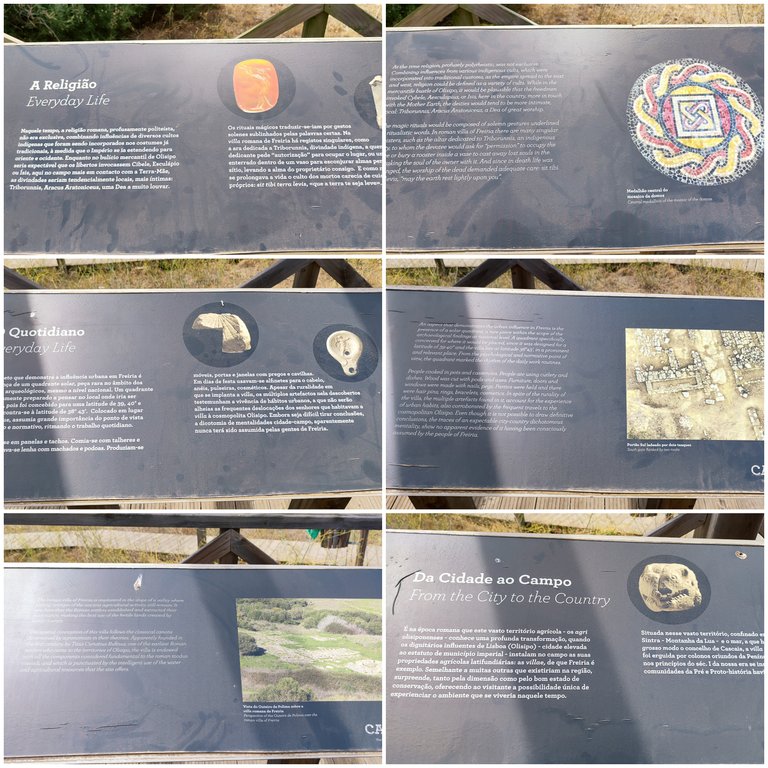

Pre-Romanesque ruins📸🏺 /Ruinas pre-romanica🌎🚩
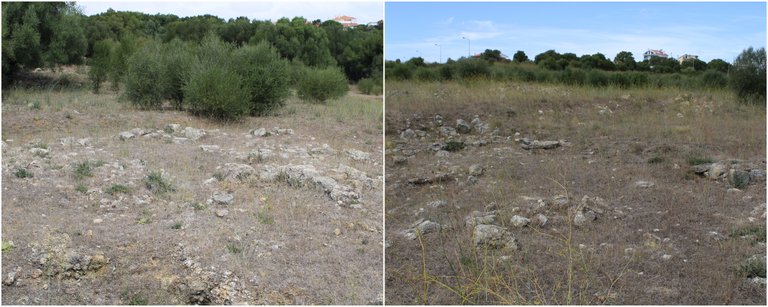
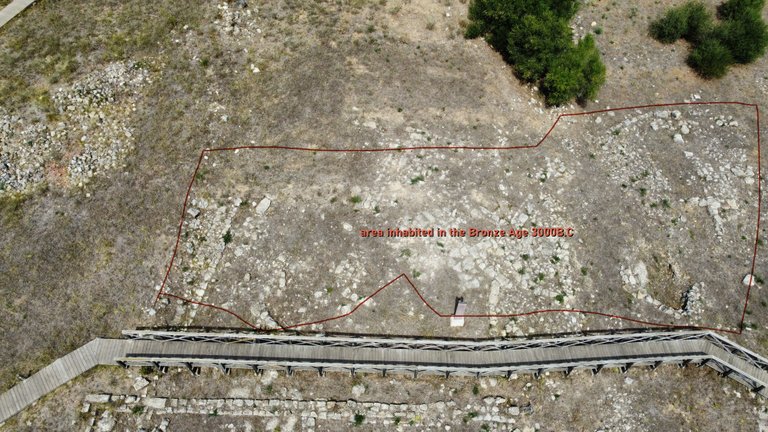
It is interesting because it was believed that only people lived in some mountains of Cascais during the Iron Age, but in this area, just under 200 meters from the Roman villa, a village from the Bronze Age was discovered. This is a difference of almost two thousand years. It is not visible, but on the other side of the villa, a village from the Stone Age was also discovered.
es interesante porque se creia que solo habitaron personas en algunas montanas de Cascais en la era de Hierro pero esta zona a poco menos de 200 metros de la villa romana se descubrio una aldea de la era de bronce esto es una diferencia de casi dos mil anos. no se aprecia pero del otro lado de la villa tambien se descubrio una aldea de la era de piedra.
Source: Information local

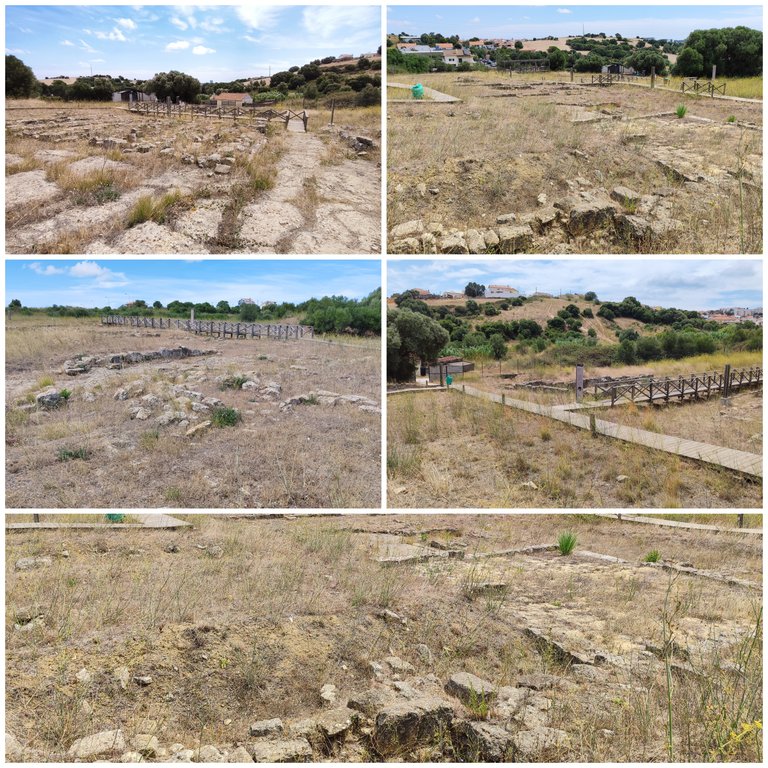

DNA is an organization to foster and DENSIFY NATURE-APPRECIATION which aims to establish REPORTS OF BIODIVERSITY DATA that is contributed by all of us Hiveans and subsequently cataloged.
Therefore DNA searches for HIGH-QUALITY posts that aim to DESCRIBE and determine the BIODIVERSITY AROUND YOU with added EXPLANATIONS and INFORMATION. For these informative posts they offer a CURATION SERVICE using the @dna.org account. It is also a CURATION TRAIL. Just add the #dna TAG if you think that any of your posts is what they are looking for.
THANKS FOR READING ME (PHOTOS AND VIDEOS OF MY PROPERTY) / GRACIAS POR LEERME FOTOS Y VIDEOS DE MI PROPIEDAD🙂🧠🦾👍

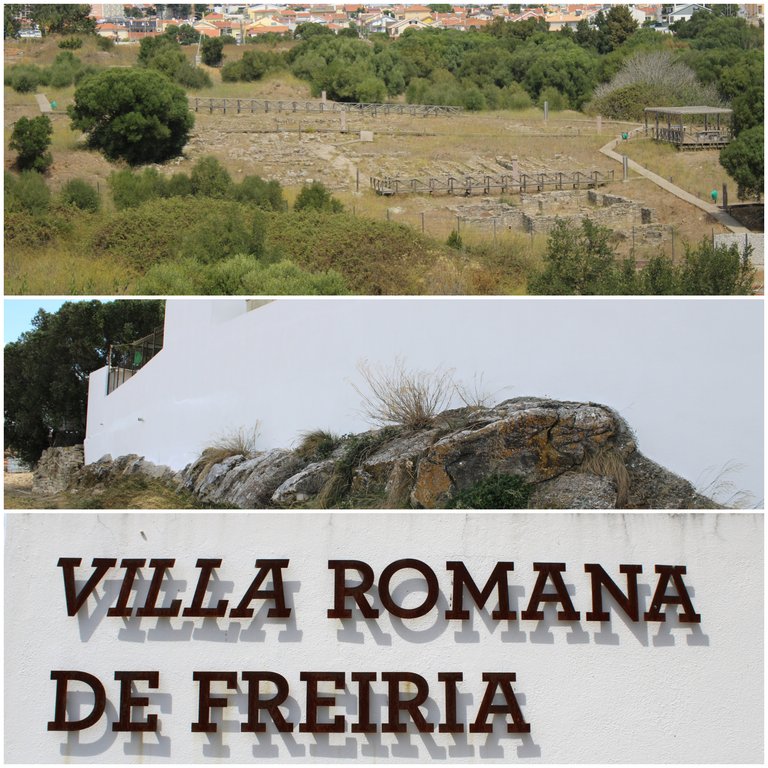
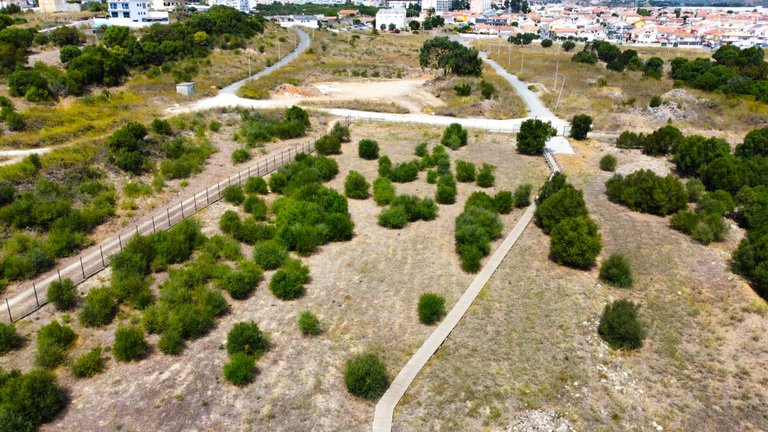

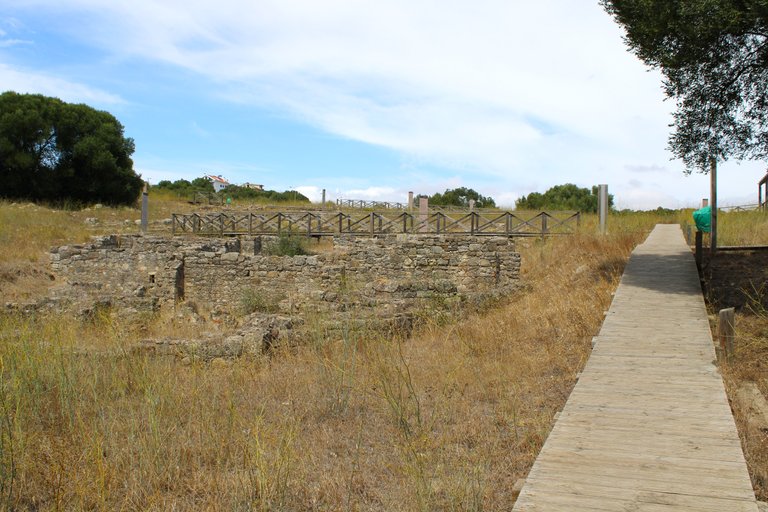
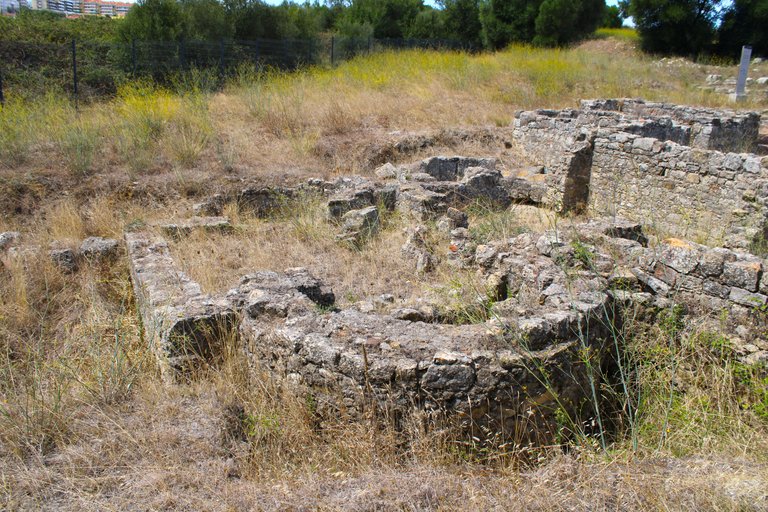

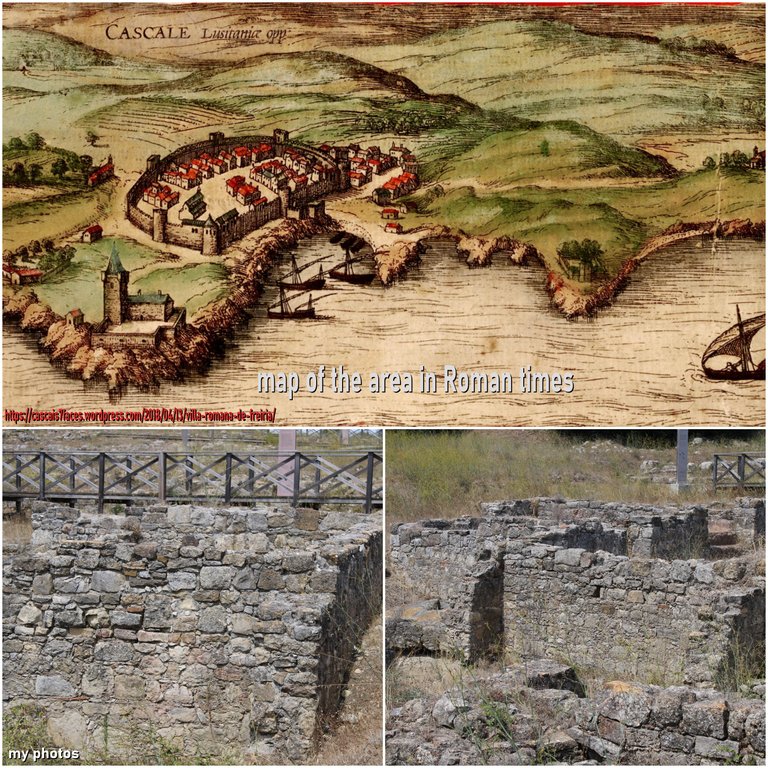
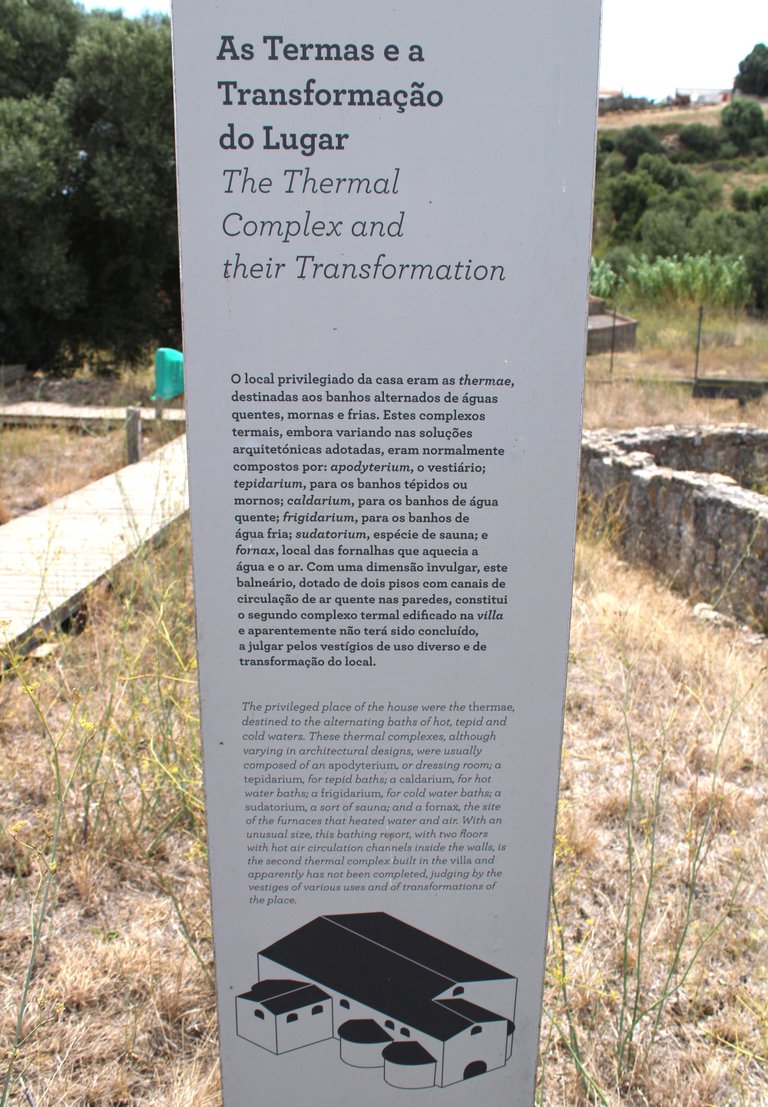








































Congratulations, your post has been added to WorldMapPin! 🎉
Did you know you have your own profile map?
And every post has their own map too!
Want to have your post on the map too?
¡Felicitaciones!
1. Invierte en el PROYECTO ENTROPÍA y recibe ganancias semanalmente. Entra aquí para más información.
3. Suscríbete a nuestra COMUNIDAD, apoya al trail de @Entropia y así podrás ganar recompensas de curación de forma automática. Entra aquí para más información sobre nuestro trail.
4. Creación de cuentas nuevas de Hive aquí.
5. Visita nuestro canal de Youtube.
Atentamente
El equipo de curación del PROYECTO ENTROPÍA
Sending Love and Ecency Vote!

Thanks for your contribution to the STEMsocial community. Feel free to join us on discord to get to know the rest of us!
Please consider delegating to the @stemsocial account (85% of the curation rewards are returned).
You may also include @stemsocial as a beneficiary of the rewards of this post to get a stronger support.
Pues déjame decirte que ya no necesito viajar, porque visitando esta publicación me he mandado un espectacular y asombroso viaje a Freiria.
El sistema que usaban para mantener las saunas es bien ingenioso, sabiduria ancestral recorriendo las paredes.
Tu publicación es sorprendentemente completa,buena y de muchísima calidad, ojala fuese yo un gran stakeholder para poder dejarte unos $50 dolares en votos que según mi opinión es lo que merece un contenido de este tipo.
¡Fascinante trabajo, me pongo de pie y te aplaudo!
Saludos mi amigo, creeme que no hago esto por dinero 😊 ya mis post alcanzaron muchas veces el mejor pagado del día, semana etc, por eso no me quejo, y bueno soy zorro viejo jaja en realidad mi cuenta real ya era para estar en 80 tengo muchos años por estos lares, estamos en contacto si necesitas ayuda en algo.
Ah muchas gracias, eres un veterano wow. Seguro si me surje alguna duda te consultare al respecto!.